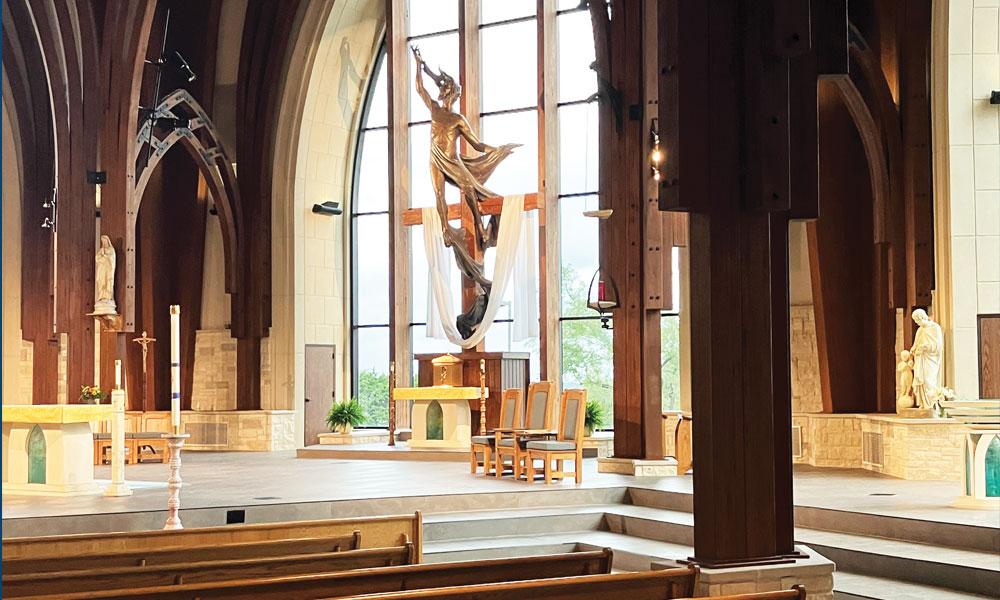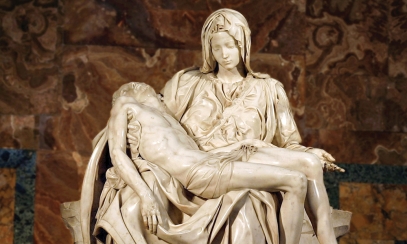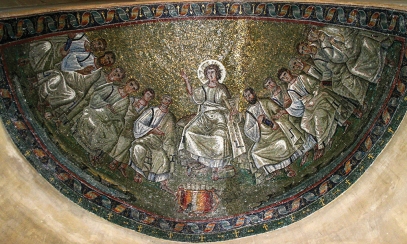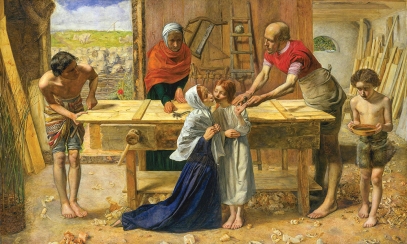
The Road to Emmaus
Emmaus Catholic Church in Lakeway is officially called the Church of the Resurrection. The current church was built in 2001, and from the start Msgr. Richard McCabe, who was the pastor at that time, insisted that art was to be a major part of the building, using both commissioned modern art as well as antique French art.
Emmaus Catholic Church in Lakeway is officially called the Church of the Resurrection. The current church was built in 2001, and from the start Msgr. Richard McCabe, who was the pastor at that time, insisted that art was to be a major part of the building, using both commissioned modern art as well as antique French art.
The u-shaped gathering space includes statues of saints and stained glass, featuring images from both the Old and New Testaments. The beautiful holy water fonts were created by celebrated local artisan Damian Priour. The gathering space invites worshippers to pause and recognize the transition from everyday sacred activity to the Holy Liturgy and creates the sense of a threshold between these activities.
As one enters the sanctuary, eyes are drawn into the space by soaring wooden Gothic arches, inspired by Fay Jones’ beautiful Thorncrown Chapel in Arkansas. It almost feels like a forest, there is so much wood, connected with simple black gusset plates and what appear to be spikes. As one’s eyes lower, straight ahead is a dramatic crucifix of the Risen Christ, backed by a clear glass arched window that draws the outdoors in. The bronze Christ was created by Huberto Manuestas of San Luis, Colorado, and was influenced by the sculpture in the Pope John Paul VI Audience Hall in Rome.
Priour also created the altar, ambo and baptismal font in his signature limestone and glass. The Stations of the Cross are magnificent antiques from Notre-Dame de Marmande dating from the 12th century and measuring 6 feet high and 4½ feet wide, a scale that works beautifully in this space.
The sanctuary today is not exactly as it was in 2001. During Ice Storm Uri in 2021, although the church’s heat was on, the fire suppression system leaked for 11 hours, flooding the church. One large wall had to be completely rebuilt, and the carpet was replaced with ceramic tile, which dramatically improved the acoustics. Confessionals were also added.
During construction, two changes were made that improved the liturgy itself. Prior to the ice storm, the Blessed Sacrament had been reserved at a distance from the altar, which made for an awkward period during Mass. During the restoration, the tabernacle was moved behind the altar to the foot of the cross.
Also, the original altar built at 30 inches tall, was reconstructed to a height of 39 inches. The original altar had three bases, each of which had in its center beautiful sculptures of a dove, a crown and a cross. The new altar kept two of the bases, and the third was used to raise the tabernacle. This solution kept the original sense of the design and looked as though it had always been that way, but the change did stir some controversy.
Reminiscent of decisions to remove altar rails, such situations remind us that the art and architecture in our sacred spaces are there to serve the liturgy and enhance worship. Indeed, the sanctuary at Emmaus truly is a holy space where we can experience an authentic transformation as we walk with the Risen Christ.
Mark Landers is a parishioner of St. Austin Parish in Austin and a member of the Diocesan Fine Arts Council. He and his wife, Christina, own and operate Landers’ Studio, a woodworking shop and design studio. They design and construct custom furniture and high-quality architectural piecework.



